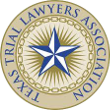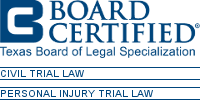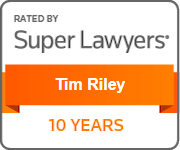(Cite as: 976 S.W.2d 696)
Court of Appeals of Texas,
Houston (1st Dist.).
W.E. KORNDORFFER, M.D., Appellant,
v.
Wendall C. BAKER, Sr. and Zoe A. Baker, Appellees.
No. 01-96-00062-CV.
Dec. 18, 1997.
Rehearing Overruled May 15, 1998.
OPINION
WILSON, Justice.
Pursuant to Tex.Civ.Prac. & Rem.Code Ann. § 51.014(a)(5) (Vernon Supp.1998), appellant, W.T. Korndorffer, M.D., appeals from the trial court’s interlocutory order denying his motion for summary judgment based on immunity. We affirm.
Facts
Wendell Baker, Jr. (“the decedent”) was a twenty-one-year-old male who died of gunshot wounds inflicted during a confrontation with police on a Galveston Island beach on March 14, 1992. Dr. Korndorffer, the chief medical examiner for Galveston County, was required by law to perform an autopsy on the decedent. Texas law permits the medical examiner to remove and donate corneal tissues without the affirmative consent of close family under certain prescribed circumstances.
On March 14, 1992, at 8:50 p.m., Dr. Korndorffer performed a preliminary examination and consented to the removal of corneal tissue from the decedent. At 9:29 p.m., Dr. *698 Wendell Baker, Sr., father of the decedent, called the Medical Examiner’s office and spoke with Bruce Polikoff, a part-time investigator with the office, about the autopsy. Dr. Baker states he unequivocally objected to any unnecessary medical procedure removing body parts or tissue from the decedent’s body. Polikoff states Dr. Baker made no objections to the removal of the decedent’s corneal tissues. At 11:00 p.m. that same evening, the decedent’s corneal tissues were removed, and the postmortem examination was performed the following morning.
Following a subsequent, independent autopsy, Dr. Baker learned that the corneal tissues had been removed from his son’s eyes. Dr. Baker and the decedent’s mother, Zoe Baker, sued Dr. Korndorffer for negligence and negligence per se in permitting the removal of the decedent’s corneal tissues over Dr. Baker’s objection. Dr. Korndorffer moved for summary judgment claiming official and statutory immunity. The trial court denied his motion.
Jurisdiction
Denial of a motion for summary judgment is an interlocutory order which ordinarily cannot be appealed. Humphreys v. Caldwell, 888 S.W.2d 469, 470 (Tex.1994). An exception exists, however, when the trial court denies a motion for summary judgment based on an assertion of immunity by an officer or employee of the state. Tex.Civ.Prac. & Rem.Code Ann. § 51.014(a)(5) (Vernon Supp.1998); City of Columbus v. Barnstone, 921 S.W.2d 268, 271 (Tex.App.– Houston [1st Dist.] 1995, no writ). Dr. Korndorffer’s appeal of the denial of his summary judgment is properly before this Court.
Standard of Review
A party moving for summary judgment has the burden of proving there is no genuine issue of material fact, and that it is entitled to judgment as a matter of law. Nixon v. Mr. Property Management Co., 690 S.W.2d 546, 548 (Tex.1985). A defendant is entitled to summary judgment if it conclusively establishes each element of an affirmative defense as a matter of law such that there is no genuine issue of material fact. Centeq Realty, Inc. v. Siegler, 899 S.W.2d 195, 197 (Tex.1995); Fernandez v. Memorial Healthcare Sys., Inc., 896 S.W.2d 227, 230 (Tex.App.–Houston [1st Dist.] 1995 writ denied). In deciding whether there is a disputed material fact issue precluding summary judgment, we accept the evidence that favors the nonmovant as true, and indulge all reasonable inferences and resolve all doubts in favor of the nonmovant. Randall’s Food Markets, Inc. v. Johnson, 891 S.W.2d 640, 644 (Tex.1995).
Immunity from Liability
In points of error one and two, Dr. Korndorffer complains the trial court erred in denying his motion for summary judgment. In his motion for summary judgment, Dr. Korndorffer argues he is immune from liability under both the Texas Health and Safety Code and the common law doctrine of official immunity.
Statutory Immunity
Dr. Korndorffer contends that because his consent to the removal of the corneal tissues from the decedent was proper under section 693.012 of the Texas Health and Safety Code, [FN1] he is immune from liability under section 693.014(a) of the Texas Health and Safety Code. [FN2]
FN1. Section 693.012 states:
On a request from an authorized official of an eye bank for corneal tissue, a justice of the peace or a medical examiner may permit the removal of corneal tissue if:
(1) the decedent from whom the tissue is to be removed died under circumstances requiring an inquest by the justice of the peace or medical examiner;
(2) no objection by a person listed in Section 693.013 [which includes the decedent’s parents] is known by the medical examiner; and
(3) the removal of the corneal tissue will not interfere with the subsequent course of an investigation or autopsy or alter the decedent’s postmortem facial appearance.
Tex. Health & Safety Code Ann. § 693.012 (Vernon 1992) (emphasis added).
FN2. Section 693.014 is entitled “Immunity From Damages in Civil Action” and recites in part:
(a) In a civil action brought by a person listed in Section 693.013 [which includes the decedent’s parents] who did not object before the removal of corneal tissue, a medical examiner, justice of the peace, or eye bank official is not liable for damages on a theory of civil recovery based on a contention that the person’s consent was required before the corneal tissue could be removed.
Tex. Health & Safety Code Ann. § 693.014(a) (Vernon 1992) (emphasis added).
*699 In his affidavit in support of his motion for summary judgment, Dr. Korndorffer stated the decedent was killed in a confrontation with police on March 14, 1992. Dr. Korndorffer further stated that in his capacity as Chief Medical Examiner for Galveston County and in compliance with section 693.012 of the Texas Health & Safety Code, he determined the removal of the decedent’s corneal tissue would not interfere with subsequent investigations or autopsy; would not alter the decedent’s post-mortem facial appearance; and that he “was aware of no objections to the removal of the decedent’s corneal tissue.” Dr. Korndorffer next stated that based on a standing request for corneal tissues issued by the director of the Lions Eye Bank of Texas, he consented to the removal of the decedent’s corneal tissue at approximately 8:50 p.m., pursuant to section 693.012. The decedent’s corneal tissue were removed at approximately 11:00 p.m.
Additional summary judgment evidence was provided by Polikoff. In his affidavit, Polikoff acknowledged having received a call from Dr. Baker, but stated that Dr. Baker made no objections to the removal of the decedent’s corneal tissue. Therefore, Polikoff stated, he did not inform Dr. Korndorffer of any objection.
Under a strict literal reading of the statute, Dr. Korndorffer’s assertion that he “was aware of no objections to the removal of the decedent’s corneal tissue,” appears to satisfy the requirement of section 693.012(2) that “no objection by [the decedent’s parents] is known by the medical examiner.” The appellees, however, contend that Dr. Baker did object to the removal of any tissue from the decedent’s body in a conversation with the person (Polikoff) who took Dr. Baker’s phone call in the Medical Examiner’s office.
As controverting evidence, Dr. Baker’s affidavit states he phoned the Medical Examiner’s office on the evening of March 14, 1992, at approximately 9:29 p.m. He spoke with Polikoff, who identified himself as the investigator for the Medical Examiner’s office in Galveston County. Dr. Baker further stated he told Polikoff the medical examiner could perform an autopsy on his son solely for the purpose of determining the cause of death, and that he unequivocally “objected to any unnecessary surgical procedures to remove body parts or tissue” from the decedent’s body.
The affidavit of Grace Gafford, a long-time friend of Dr. Baker, states she visited Dr. Baker’s residence on the evening of March 14, 1992. Gafford stated she overheard Dr. Baker’s call to the Medical Examiner’s office in Galveston County. She stated she was “certain, without doubt, that [she] heard [Dr. Baker] instruct the party he was speaking to not to perform any procedures on his son other than a basic autopsy to determine cause of death.” She specifically remembered Dr. Baker’s instructing a person named “Polikoff” to inform the medical examiner that “he had better not butcher up my son.”
Because the above evidence is presented in the summary judgment context, we must accept the evidence that favors the nonmovant as true, and indulge all reasonable inferences and resolve all doubts in favor of the nonmovant. Randall’s Food Markets, Inc. v. Johnson, 891 S.W.2d 640, 644 (Tex.1995). We therefore necessarily find Dr. Baker has submitted summary judgment evidence that an objection to the removal of any tissue or body part from his son was communicated to Polikoff at the Medical Examiner’s office prior to the removal of the tissue. However, there is no evidence Dr. Korndorffer himself knew of the objection.
Statutory Construction
[1][2][3] A fundamental issue in this case concerns the construction of Tex. Health & Safety Code Ann. § 693.012(2) (Vernon 1992). Statutory construction is a question of law. Johnson v. City of Fort Worth, 774 S.W.2d 653, 656 (Tex.1989); Dob’s Tire and Auto Center v. Safeway Ins. Agency, 923 S.W.2d 715, 719 (Tex.App.–Houston [1st *700 Dist.] 1996, writ dism’d w.o.j.) The cardinal rule of statutory construction is to ascertain the legislature’s intent and to give effect to that intent. Union Bankers Ins. Co. v. Shelton, 889 S.W.2d 278, 280 (Tex.1994). In construing a statute, we consider the entire act, its nature and object, and the consequences that would follow from each construction. Sharp v. House of Lloyd, Inc., 815 S.W.2d 245, 249 (Tex.1991) (citing Sayre v. Mullins, 681 S.W.2d 25 (Tex.1984)).
[4][5][6] Our common law provides that where the language in a statute is unambiguous, we must seek the intent of the legislature as found in the plain and common meaning of the words and terms used. Moreno v. Sterling Drug, Inc., 787 S.W.2d 348, 352 (Tex.1990). We, however, will “not decide the scope of statutory language by a bloodless literalism in which text is viewed as if it had no context.” West Anderson Plaza v. Feyznia, 876 S.W.2d 528, 532 (Tex.App.–Austin 1994, no writ). Therefore, where the application of the statute’s plain language would lead to absurd consequences that the legislature could not have possibly intended, we will not apply the statutory language literally. See Sharp, 815 S.W.2d at 249 (Tex.1991) (citing McKinney v. Blankenship, 282 S.W.2d 691, 698 (Tex.1955)). [FN3]
FN3. For other formulations of the absurd-result principal see City of San Antonio v. Fourth Court of Appeals, 820 S.W.2d 762, 768 (Tex.1991) (orig. proceeding) (“Absent a clear legislative directive, a statute should not be construed so as to produce an absurd or foolish result if it is reasonably susceptible of an alternative construction.”); City of Sherman v. Public Util. Comm’n, 643 S.W.2d 681, 684 (Tex.1983) ( “[W]here adherence to the strict letter would lead to injustice, to absurdity, or to contradictory provisions, the duty devolves upon the court of ascertaining the true meaning.”); Cramer v. Sheppard, 140 Tex. 271, 167 S.W.2d 147, 155 (1942) (“[S]tatutory provisions will not be so construed or interpreted as to lead to absurd conclusions, great public inconvenience, or unjust discrimination, if any other construction or interpretation can reasonably be indulged in….”); Anderson v. Penix, 138 Tex. 596, 161 S.W.2d 455, 458-59 (1942) (“[A] statute will not be construed so as to ascribe to the legislature an intention to do an unjust or an unreasonable thing, if such statute is reasonably susceptible of a construction that will not accomplish such a result.”); Lacey v. State Banking Bd., 11 S.W.2d 496, 505 (Tex.1928) (“A statute should never be so construed as to work injustice and hardship, if the language used can reasonably be given any other construction.”); Witherspoon v. Jernigan, 97 Tex. 98, 76 S.W. 445, 447 (1903) (“When a literal interpretation of the language used would produce an absurdity, the court will restrict or enlarge the text so as to conform to the general purposes and intent of the Legislature.”). For an in depth analysis of the absurd-result principal see generally J. Woodfin Jones, The Absurd-Result Principal of Statutory Construction, 15 REV.LITIG. 81 (1996).
In addition to the common law, the legislature has enacted the Code Construction Act which provides the courts with certain aids in construing statutes. Tex.Gov’t Code Ann. §§ 311.001 (Vernon 1988); see also Thiel v. Harris County Democratic Exec. Com., 534 S.W.2d 891, 894 (Tex.1976). The Code Construction Act provides that in enacting a statute it is presumed:
(1) compliance with the constitutions of this state and the United States is intended;
(2) the entire statute is intended to be effective;
(3) a just and reasonable result is intended;
(4) a result feasible of execution is intended; and
(5) public interest is favored over any private interest.
Tex.Gov’t Code Ann. § 311.021 (Vernon 1988); see Industrial Accident Bd. v. Martinez, 836 S.W.2d 330, 333 (Tex.App.–Houston [14th Dist.] 1992, no writ); Linick v. Employers Mut. Cas. Co., 822 S.W.2d 297, 301 (Tex.App.–San Antonio 1991, no writ). Additionally, the Act provides that when construing a statute, whether or not the statute is considered ambiguous on its face, a court may consider among other matters:
(1) the object sought to be attained;
(2) circumstances under which the statute was enacted;
(3) legislative history;
(4) common law or former statutory provisions, including laws on the same or similar subjects;
(5) consequences of a particular construction;
(6) administrative construction of the statute; and
*701 (7) title (caption), preamble, and emergency provision.
Tex.Gov’t Code Ann. § 311.023 (Vernon 1988); see City of Dallas v. Cornerstone Bank, N.A., 879 S.W.2d 264, 270 (Tex.App.–Dallas 1994, no writ).
In enacting Tex. Health & Safety Code Ann. §§ 693.011-693.014 (Vernon 1992), the legislature has evidenced its intent to promote the donation of corneal tissue by switching the burden on the consent issue from the medical examiner to the relatives of the decedent. The legislature, however, has provided a mechanism whereby certain individuals can prevent the removal of corneal tissue from a decedent for whatever reason. Tex. Health & Safety Code Ann. §§ 693.012-693.013 (Vernon 1992). In providing this mechanism, the legislature has placed the burden on the individual to notify the medical examiner of his or her objection. Tex. Health & Safety Code Ann. § 693.012(2) (Vernon 1992). The medical examiner is no longer required to seek out these persons and obtain their permission.
[7] Applying a literal reading to Tex. Health & Safety Code Ann. § 693.012(2) (Vernon 1992) would require a person objecting to the removal of corneal tissue to insure that the medical examiner personally knew of the objection. Such an interpretation of the statute woulPAN ad to an entirely unreasonable and absurd result. It is not feasible, nor reasonable, to require notification of the medical examiner personally in Galveston County, or more so in even larger counties like Harris County where numerous post mortems are done at all hours of the day and night. We find such a requirement would create too onerous a burden on the person objecting, cause public inconvenience, and would produce a result not feasible of execution. For example, a grieving family member who was unable to get the medical examiner personally on the phone to voice his objection, would be required to somehow track down the medical examiner and personally state his objection. The legislature could not have intended such a harsh requirement.
[8] Although some may consider Dr. Baker’s objection ill advised for a variety of reasons, the legislature nevertheless left room for an objection, and thus we will not interpret the statute so as to make the use of the objection so onerous as to be a practical improbability within the context of the facts of this case, and in future cases in some locales, an impossibility. We instead interpret the statute to provide for a feasible and meaningful execution of an objection. Because the summary judgment evidence we are required to believe shows Dr. Baker timely contacted the medical examiner’s office, we find a fact issue exists as to whether the medical examiner knew, or within the reasonable conduct of his public office, should have known, prior to the actual removal of the corneal tissue of any objection lodged by Dr. Baker.
Common-Law Doctrine of Official Immunity
[9][10] In addition to his claim of statutory immunity, Dr. Korndorffer argues he is entitled to official immunity. Government employees are entitled to official immunity from suit arising from the performance of their (1) discretionary duties in (2) good faith as long as they are (3) acting within the scope of their authority. City of Lancaster v. Chambers, 883 S.W.2d 650, 653 (Tex.1994); Hawsey v. Louisiana Dep’t of Social Services, 934 S.W.2d 723, 726 (Tex.App.–Houston [1st Dist.] 1996, writ denied). Additionally, official immunity is an affirmative defense, and it is therefore Dr. Korndorffer’s burden to establish all the elements of official immunity as a matter of law. Chambers, 883 S.W.2d at 653.
Discretionary v. Ministerial Acts
[11][12] Ministerial acts are those “[w]here the law prescribes and defines the duties to be performed with such precision and certainty as to leave nothing to the exercise of discretion or judgment.” Downing v. Brown, 935 S.W.2d 112, 114 (Tex.1996) (quoting Chambers, 883 S.W.2d at 653). Ministerial actions require obedience to orders or the performance of a duty to which the actor has no choice, as opposed to discretionary *702 actions which involve personal deliberation, decision, and judgment. Chambers, 883 S.W.2d at 653.
[13] As discussed previously, the statute under which Dr. Korndorffer removed the corneal tissue provides in part that a medical examiner may permit the removal of corneal tissue if no objection is known by the medical examiner. Tex. Health & Safety Code Ann. § 693.012 (Vernon 1992). Here the statute clearly prescribes and defines the medical examiner’s duties, leaving nothing to the exercise of discretion or judgment. Once an objection is made pursuant to the statute, the medical examiner has no choice in the matter. He simply may not remove the corneal tissue.
Dr. Korndorffer, however, argues that if his actions are viewed as a whole, he was exercising discretion under the statute. See Koerselman v. Rhynard, 875 S.W.2d 347, 351-52 (Tex.App.–Corpus Christi 1994, no writ). Dr. Korndorffer alleges he exercised his discretion in making the following determinations: (1) the decedent had been killed under circumstances requiring an inquest; (2) removal of the decedent’s corneal tissue would not interfere with subsequent investigations; and (3) removal of the corneal tissue would not alter the decedent’s post-mortem facial appearance. These actions which Dr. Korndorffer relies on are only relevant if the medical examiner knew of no objection to the removal of the corneal tissue and logically would only occur under those circumstances. This is not the case here. The issue in this case concerns whether Dr. Korndorffer knew or should have known of the objection, not his subsequent actions. We, therefore, find a medical examiner’s statutory duties to be nondiscretionary when he knows or should have known of an objection to the removal of corneal tissue. Because Dr. Korndorffer has failed to prove the first element of official immunity as a matter of law, we need not address the remaining elements.
Conclusion
We find that Dr. Korndorffer has not met his burden of proving there is no genuine issue of material fact. We therefore overrule points of error one and two.
We affirm the trial court’s order denying summary judgment.
END OF DOCUMENT








